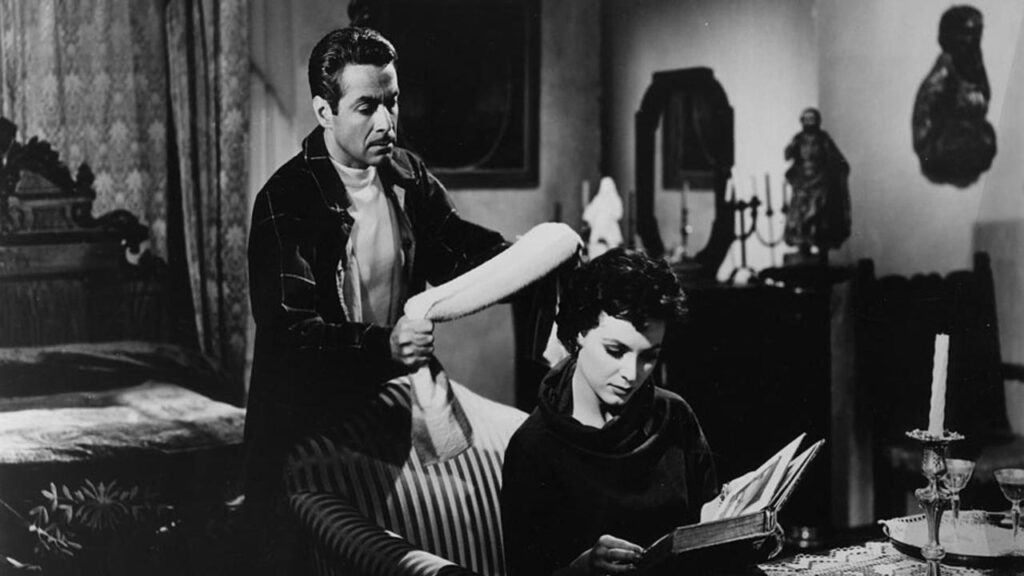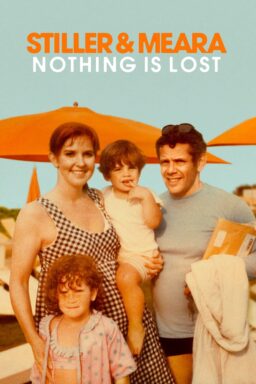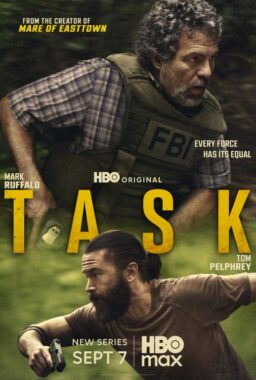One potential pitfall for a festival that places a special stress on film restoration is the likelihood of screening an old title that leaves the contemporary choices in the dust. It could not be helped, obviously, in 2017, when the Biennale hosted a restored version of Kenji Mizoguchi’s heart-shattering “Sansho the Bailiff,” which is on every sensible person’s short list of the greatest films ever made. Luis Buñuel’s 1955 “Ensayo de un Crimen,” titled “The Criminal Life of Archibaldo de la Cruz,” is not as well-propagated a film as “Sansho,” and it doesn’t come with the conventional “great film” trappings. But it’s one of Buñuel’s most hilarious, entertaining, and genuinely provocative films, and it makes any of the current “edgy” pictures I’ve seen here and back in the States recently look like amateur hour.
The premise is simple: its independently wealthy hero was struck by a notion, in his youth, that he could kill with his mind. In adulthood he aspires to kill for real. He plans gnarly crimes with great specificity, but they always go wrong. He doesn’t commit a single murder. But his would-be victims die anyway. It’s enough to give a guy a complex. Which Archibaldo—who, as played by the great Ernesto Alonso, often staggers and gapes in a fashion not dissimilar to that of Gaston Modot in Buñuel’s “L’Age d’Or”—definitely has.
The movie is a grab-bag of styles, from lurid horror to soap-opera-ascendant melodrama to shadowy noir. Buñuel asserts droll mastery over them all, while delivering oodles of surrealist imagery including a sneak preview, of sorts, of the jaw-droppers in the later masterpiece “Tristana.” Relative to the other versions of the movie I’ve seen, this restoration from Mexico’s Cinoteca Nacional is like looking through a pair of newly-cleaned glasses. Keep your eyes out for this one.

Dennis Hopper had only a handful of opportunities to direct movies entirely on his own terms. 1980’s “Out of the Blue” was a picture on which he was contracted only to act, but when the production fell apart early in the shooting, Hopper wrote a bunch of new material and offered to salvage the project by directing. What had apparently been a more low-temperature family drama became a fevered chronicle of total domestic destruction. Hopper was fascinated by young star Linda Manz, who plays his daughter in the movie. You can understand why. Young Manz, who had debuted in Terrence Malick’s 1978 “Days of Heaven,” had a face made for cinema, as much as Maria Falconetti’s was. Here she plays an unruly, punk-rock obsessed teen. In one sequence she hitchhikes from her backwater Canadian town to Vancouver, and the seemingly shot-on-the-fly footage of her tooling around is endlessly compelling. As are the closeups of her in her bedroom as her character comes to grips with her own identity and memories of her drunken father (Hopper), just out of prison after doing five years for plowing his truck into a school bus and what he did to her before he was sent up.
Given its circumstances, it’s understandable that “Out of the Blue,” whose restoration is being presented by Natasha Lyonne and Chloe Sevigny, has more the feel of a cinematic scrapbook than anything else. It’s a scrapbook packed with genuinely numinous moments, though. The movie’s, and Manz’s, heedless gutsiness are all that’s needed to hold it together.

Jacques Tourneur is arguably best known for his exquisitely-crafted and often groundbreaking horror movies. “Cat People,” “I Walked With A Zombie,” “Night of the Demon”; these are canon for the horror buff. He also directed what I consider the greatest film noir, “Out of the Past.” But the French-born director was equally adept at Westerns. 1952’s “Way of a Gaucho” isn’t as highly regarded as Tourneur’s “Wichita” or “Canyon Passage.” It was produced by 20th Century Fox in 1952, shortly before the introduction of CinemaScope but early on in the major studios’ campaigns to offer attractions that would get slacking former moviegoers away from their televisions and into the bijous. The hook of the Technicolor “Gaucho” was its location shooting in Argentina. The movie’s copious, conspicuous concentration on gorgeous landscapes—mountains! Pampas!—almost yields a travelogue feel.
The story of Tourneur’s film is odd, with title gaucho Rory Calhoun (aiming high for a Tyrone Power feel) demonstrating that one way of the gaucho is to get into a knife fight five minutes after arriving at home. Said fight leads to all kinds of complications, starting with a forced stint in the army under the unwavering command of the unusually eloquent martinet major Salinas (a youngish Richard Boone). Calhoun’s gaucho is dismissive of women until he meets the one played by Gene Tierney. Certain individual shots of her here are almost literally breathtaking (think Claudia Cardinale in “The Leopard”).
While maybe not what you’d call a masterpiece, “Gaucho” is enjoyable not just for itself, but because it’s a representative example of what an average American might literally stumble into at their local movie house in 1955—a conscientiously crafted genre entertainment with no high claims, into which the director and cast were able to bring their own touches of art. They really do not make them like that anymore.












